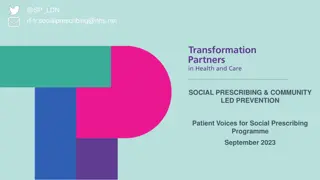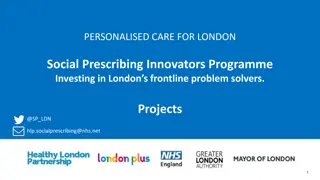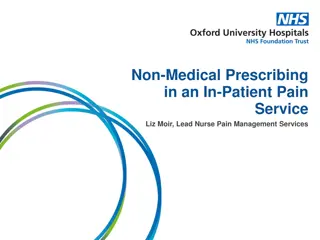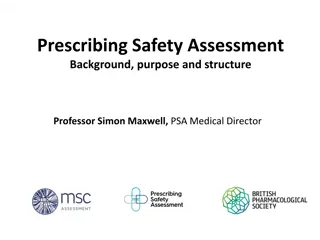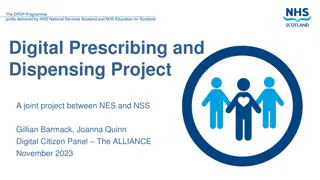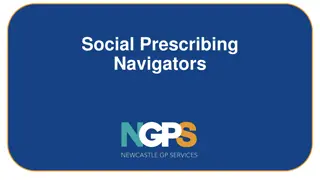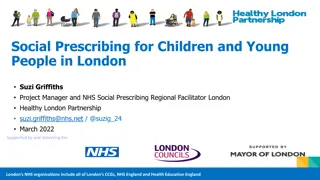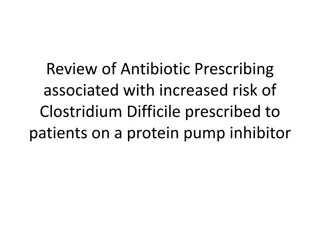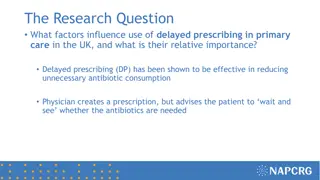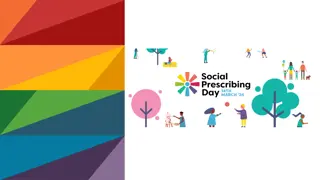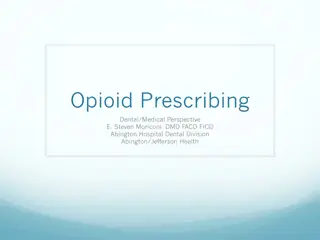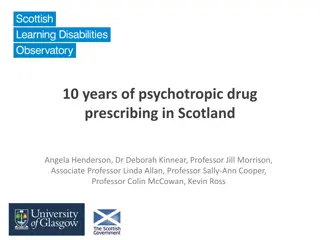
Factors to Consider Before Writing a Prescription
Learn about the essential factors that should be considered before writing a prescription, including the systematic approach recommended by the World Health Organization to ensure safe and effective prescribing practices. Factors such as accurate diagnosis, drug selection, dosage, route of administration, patient information, and regular evaluation are crucial in the prescription process.
Download Presentation

Please find below an Image/Link to download the presentation.
The content on the website is provided AS IS for your information and personal use only. It may not be sold, licensed, or shared on other websites without obtaining consent from the author. If you encounter any issues during the download, it is possible that the publisher has removed the file from their server.
You are allowed to download the files provided on this website for personal or commercial use, subject to the condition that they are used lawfully. All files are the property of their respective owners.
The content on the website is provided AS IS for your information and personal use only. It may not be sold, licensed, or shared on other websites without obtaining consent from the author.
E N D
Presentation Transcript
SGT QUESTION 4 N UR A M I R A H BI N TI ROS TA M A N N I S S YA ZWA N I BI N TI M OHA M A D R A ZA LI 1 9 1 8 4 5 N UR I M A N I N A BI N TI M OHD TAUF I K M A RYA M S HUHA DA BI N T I I S KA N DA R 192437 N OOR HA ZLI N A BI N TI M OHD Y US OF 1 9 3 8 0 5 1 9 3 8 0 3 1 9 1 8 9 5
BRIEFLY DESCRIBE THE FACTORS THAT SHOULD BE CONSIDERED BEFORE WRITING A PRESCRIPTION.
DEFINITION A PRESCRIPTION IS A VERBAL, WRITTEN OR ELECTRONIC ORDER FROM A PRACTITIONER OR DESIGNATED AGENT TO A PHARMACIST FOR A PARTICULAR MEDICATION FOR SPECIFIC PATIENT
A systematic approach advocated by the World Health Organization can help minimize poor-quality and erroneous prescribing. This six- step approach to prescribing suggests that the physician should: (1) evaluate and clearly define the patient's problem; (2) specify the therapeutic objective; (3) select the appropriate drug therapy; (4) initiate therapy with appropriate details and consider nonpharmacologic therapies. (5) give information, instructions, and warnings; (6) evaluate therapy regularly (e.g., monitor treatment results, consider discontinuation of the drug).
THE6 RIGHTS 3D RPT Diagnosis Drug Dose Route Patient Time
DIAGNOSE Objective drug information in the prescriber Correct practise and sufficient knowledge upon the symptoms and signs shown in patient Equipped with experiences and practises in diagnosis Prevent misleading beliefs in determining a sickness
DRUG Essential and readiness of drug stocks Strong regulation enforcement Qualified and formal prescriber equipped with correct knowledge on drugs and sufficient practice Incompatibility and allergic reaction of patient towards drug DRUG TEST
DOSE Incorrect dose will cause side effects Drug withdrawal symptoms and signs Overdose will mostly be LETHAL
ROUTES OF DRUGS DELIVERY Sublingual Intravenous Subcutaneous Transdermal Oral
PATIENT Must be given right information upon the effects, side effects and correct routes. Misinformation leads to poisoning and can be lethal Prevent misbelief and misinformation upon expectation and effectivity (potency and efficacy) Expiration date of drug Age and body weight
TIME Correct time and condition for drug uptake (before meal / after meal) Termination of drug Completion of drug uptake
A PRESCRIPTION SHOULD INCLUDE Name, address and telephone of prescriber Date Generic name of the drug, strength Dosage form, total amount Label : instructions, warnings Name, address and age of patient Initials of prescriber

